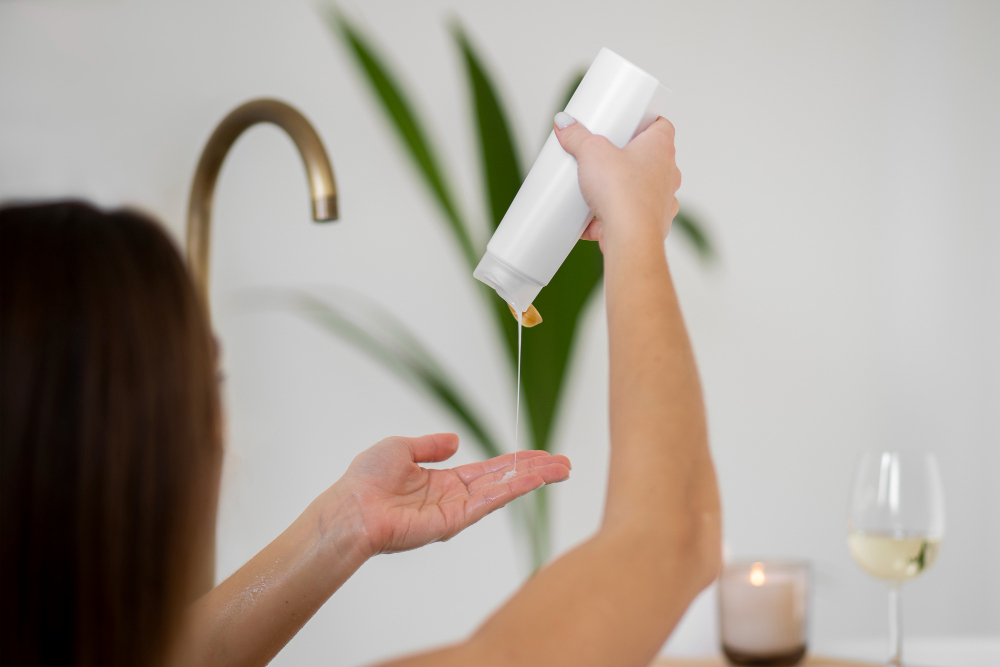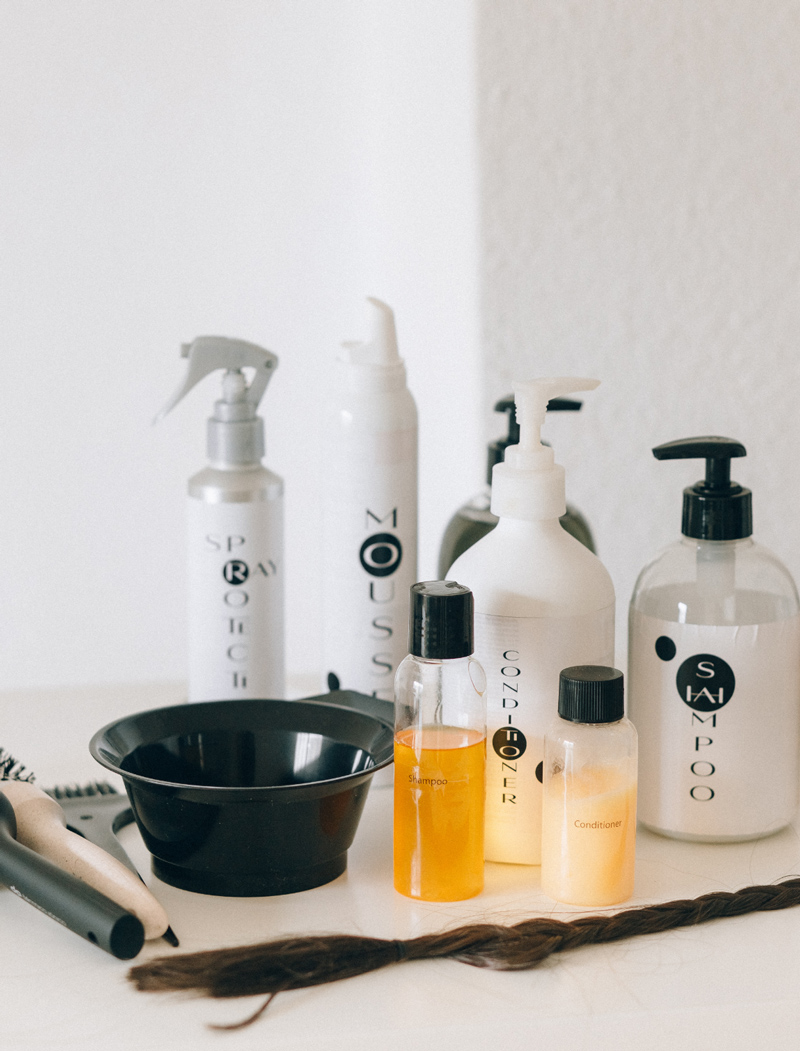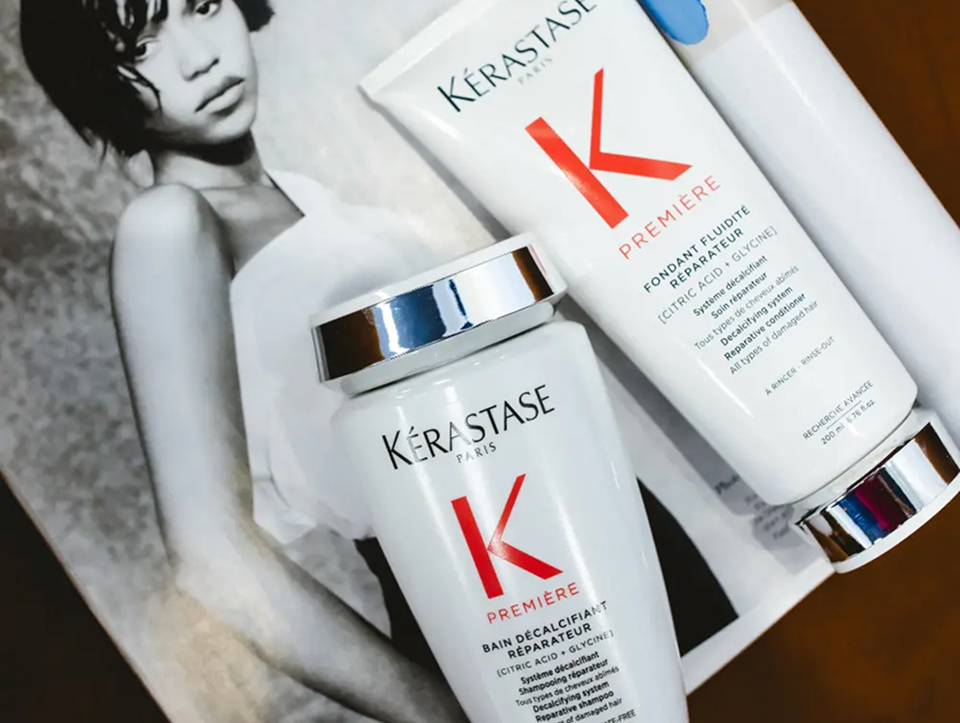You just washed your hair, and now you’re standing there with two products in your hand, a conditioner and a leave-in conditioner, wondering if both are necessary.
With so many haircare guides offering advice, it’s easy to get lost in the debate of conditioner vs leave-in conditioner.
The main difference between conditioner and leave-in conditioner is this: a rinse-out conditioner is applied after shampooing and washed out to provide deep hydration and detangling.
A leave-in conditioner stays in your hair to offer all-day moisture, frizz control, and protection. Each serves a different purpose, and many hair types benefit from using both.
In this guide, we’ll walk you through the differences between rinse-out vs leave-in conditioners, when to use one (or both), and how to build the perfect routine around your hair goals.
Conditioner vs Leave-In Conditioner: Quick Comparison
| Feature | Rinse-Out Conditioner | Leave-In Conditioner |
| When to Use | After shampooing, rinse out after 2–5 mins | After showering, leave in—no rinse |
| Texture | Thick, creamy | Light, lotion-like, or spray |
| Purpose | Deep hydration, detangling, and repair | Daily moisture boost, frizz control, prep |
| Application Area | Mid-lengths to ends | Can be used all over, including ends and scalp |
| Hydration Duration | Short-term (until rinse) | Long-lasting (until next wash) |
| Ideal For | All hair types, especially dry or damaged hair | Curly, coily, high-porosity, or frizz-prone |
| Complementary With | Deep conditioner, steam hair treatment | Oils, creams, and styling products |
| Scalp Safe? | Not recommended for the scalp | Yes, if lightweight and non-comedogenic |
| Use Frequency | Every wash | Daily or as needed |
Why Rinse-Out Conditioners Are Essential

Traditional or rinse-out conditioners are designed to be used right after shampooing. Their main job? To smooth your hair cuticle, restore moisture, and make detangling a breeze.
These formulas often include emollients, fatty alcohols, proteins, and moisture-binding ingredients that work together to strengthen and hydrate your hair shaft.
After applying from mid-lengths to ends and letting it sit for a few minutes, your strands are softer, shinier, and easier to manage.
A good rinse-out conditioner also restores your hair’s pH balance and closes the cuticle, especially crucial if your hair is color-treated or chemically processed.
At Haste, many of our clients pair their conditioner with scalp steaming treatments. This helps with product penetration, leaving your hair more elastic, hydrated, and ready to hold styles longer.
Looking for a conditioner for dry hair? Look for formulas that contain proteins, ceramides, and rich oils for an effective hair-moisturizing treatment.
🌟 You may also want to explore our favorite hydration treatments for deeper nourishment.
What Makes Leave-In Conditioner Different

Unlike rinse-out products, leave-in conditioners are designed to remain in your hair throughout the day. You apply them to damp or towel-dried hair and do not rinse them out.
Thanks to their lightweight consistency, they provide long-lasting moisture, detangling, and protection from frizz, heat, and UV damage, making them essential for dry, curly, or high-porosity hair.
Modern leave-ins often include humectants, such as hyaluronic acid, glycerin, or panthenol, which help retain water within the hair shaft and reduce dryness throughout the day.
For those dealing with frizz, leave-in conditioners can smooth the cuticle and keep flyaways at bay. They’re also ideal for layering under styling products or as a protective base for heat tools.
🌟 Fun fact: Some lightweight leave-in sprays are gentle enough for the scalp, especially if you’re experiencing dryness or irritation. Look for non-comedogenic options with scalp-safe ingredients.
Rinse-Out vs Leave-In: Should You Use Both?
Short answer? For most hair types—yes. These products don’t compete; they complement each other.
- The rinse-out provides deep hydration and detangling immediately after cleansing.
- The leave-in extends that hydration and adds a layer of protection throughout the day.
Using both, especially if you follow the LCO method (Liquid, Cream, Oil), can help seal in moisture, reduce breakage, and improve manageability.
🌟 Pro Tip: Try co-washing once a week—this conditioner-only method skips shampoo and delivers gentle hydration between deep cleansing days.
At Haste, we often recommend this layering approach for dry, textured, or color-processed hair. After steaming or conditioning, apply a leave-in cream or spray to keep hair supple and hydrated until your next wash.
Remember: climate matters. In humid climates, humectants in your leave-in pull moisture from the air, while in dry climates, you may need to add an oil or butter to seal in that hydration.
💡 While on the subject of moisture, learn how the LOC method hair routine can help you lock in moisture in your hair.
Which Is Better — Leave-In Conditioner or Conditioner?
When people ask which is better, the truth is that neither product replaces the other.
- A rinse-out conditioner is better for restoring moisture after cleansing, improving slip, and repairing the hair shaft.
- A leave-in conditioner is better for ongoing hydration, frizz control, UV/heat protection, and daily softness.
Most hair types see the best results when using both together—the rinse-out hydrates deeply, and the leave-in extends that moisture and shields your hair throughout the day.
Which One is Best for Your Hair Type?
Choosing between a leave-in vs rinse-out conditioner depends on your hair texture, porosity, and styling routine.
- Fine or low-density hair: choose lightweight leave-ins in spray form and avoid heavy creams.
- Thick, curly, or chemically treated hair? You likely need both to combat dryness, split ends, and breakage.
- Oily hair: Use leave-ins only on mid-lengths and ends.
- Curly, coily, or textured hair: layering a rinse-out with a leave-in usually gives the best moisture retention.
- High-porosity hair: responds exceptionally well to leave-ins paired with sealants or oils.
🌟 Pro Tip: Unsure of your hair’s porosity? Take the porosity test here. High-porosity hair often benefits most from layering hydration with leave-in conditioner and sealants.
Every head of hair has a different blueprint. At Haste, we often:
- Recommend protein-rich rinse-outs once a week to help strengthen your hair.
- Suggest using hydrating leave-in conditioners daily, especially after heat styling or UV exposure.
- Use a steam hair treatment once a month to lock in deeper moisture.
What Most Articles Don’t Tell You (But We Will)
Most guides miss a few crucial facts when looking at using a conditioner vs leave-in conditioner:
- Your scalp health plays a role in how well conditioners work. A dry or flaky scalp may benefit from a gentle leave-in conditioner for scalp hydration—ensure it’s light and non-clogging.
- The order you layer products matters: Start with water-based leave-ins, then apply creams or stylers, and finish with oils or butters to seal in moisture.
- If you live in a dry area, some humectants, such as glycerin, can draw water out of your strands unless they are adequately sealed. That’s why layering is so essential.
- Applying too much leave-in can weigh down hair—especially if you have fine strands. A pea-sized amount often goes a long way.
How to Apply Leave-In Conditioner (the Right Way)
- Start with damp, towel-dried hair (not soaking wet).
- Apply a nickel-sized amount of leave-in from mid-lengths to ends. Use more for thicker textures.
- Detangle with fingers or a wide-tooth comb to distribute evenly.
- Follow with your styling products, then seal in hydration with a light oil or serum if needed.
Do You Need Both?
Choosing between a conditioner and a leave-in conditioner isn’t a battle; it’s about learning how to layer your products based on your hair’s needs. When done right, using both can give you:
- Long-lasting moisture retention
- Better frizz control
- Less breakage
- A smoother foundation for styling
Visit us at Haste Urban Hair Spa to get a personalized assessment of your hair’s porosity, texture, and scalp health.
FAQ
Can you use both conditioner and leave-in conditioner?
Yes, using both can provide a layered effect of hydration and protection. The traditional conditioner provides a deep moisturizing treatment during washing, while the leave-in conditioner keeps your hair hydrated and manageable throughout the day. This combo is especially effective for dry, frizzy, or textured hair.
Should I use leave-in conditioner daily?
Daily use of a hydrating leave-in conditioner can benefit dry or frizzy hair types by maintaining consistent moisture. For finer hair, lighter leave-ins or less frequent application may be better to avoid weighing strands down.
Can leave-in conditioner help with frizzy hair?
Absolutely, many hydrating leave-in conditioners contain ingredients like hyaluronic acid for hair, which helps lock in moisture and smooth the hair cuticle, reducing frizz and flyaways throughout the day.
Will using both conditioners weigh my hair down?
Not if you choose the correct formulas for your hair type. For fine or oily hair, opt for lightweight rinse-out conditioners and light leave-ins, while thicker or curly hair can handle richer products. It’s all about balance and tailoring your routine.
Can I apply conditioner to my scalp?
Traditional conditioners are usually applied from mid-lengths to ends to avoid buildup on the scalp. However, some leave-in conditioners formulated with soothing ingredients can help hydrate dry or irritated scalps.
Is leave-in conditioner the same as a treatment?
No, leave-in conditioners provide lightweight, daily moisture, while treatments (like masks, serums, or deep conditioners) are more intensive and meant to target repair, elasticity, or deep hydration. Treatments are usually rinsed out unless labeled otherwise.
Can you leave regular conditioner in your hair?
It’s not recommended. Rinse-out conditioners contain richer ingredients that may cause buildup or scalp irritation if left on the scalp. Stick to formulas specifically labeled as leave-in.









